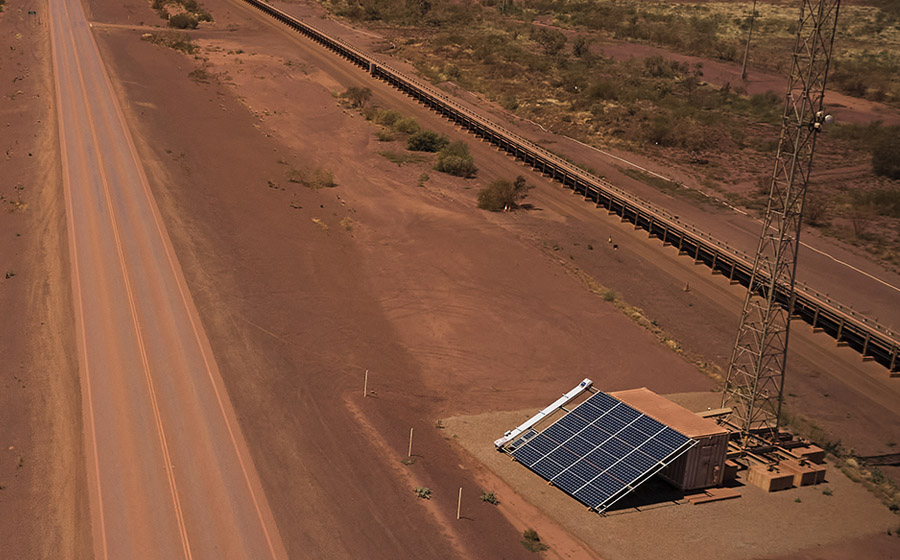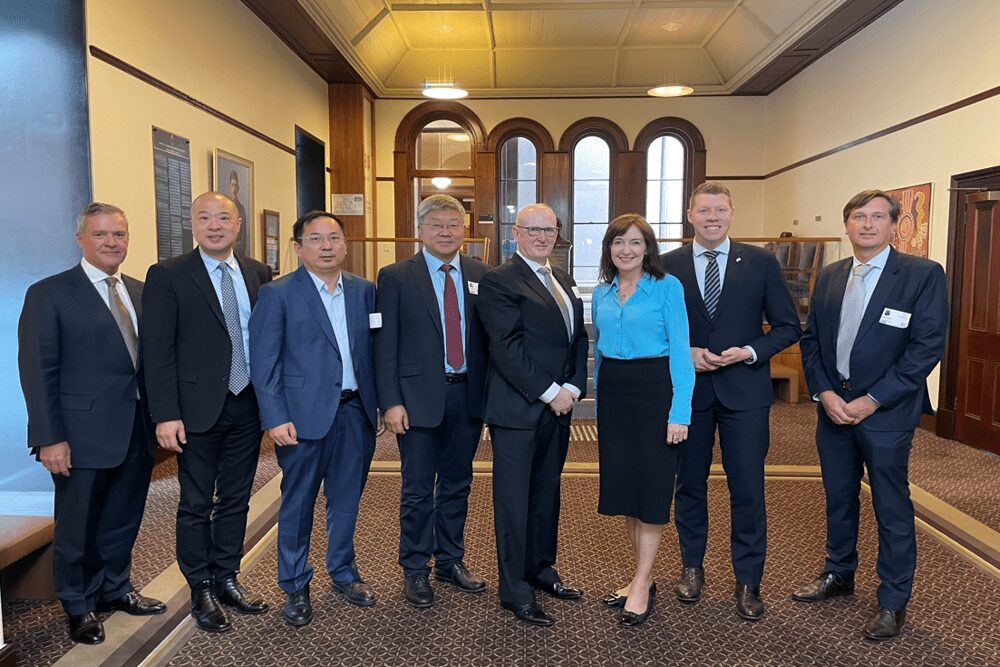
As renewables adoption increases pace across the mining sector, Solar Energy Robotics (SER) is expanding its remote solar panel cleaning solution into different applications, as well as further developing its robotics technology for the wider solar industry.
With the support of both the federal and Western Australian governments, not-for-profits and academia, and the Australian robotics ecosystem, SER will be opening a new robotics workshop in Perth, in what will be the start of a future growth industry in WA andAustralia-wide.
A specialist division of Innovative Energy Solutions (IES), SER developed a high-quality robotics product for BHP’s Jimblebar iron ore mine, which for the past five years has been critical to powering the miner’s off-grid communications for its autonomous mining fleet.
BHP’s autonomous operations at Jimblebar use solar as the preferred power supply for powering critical off-grid infrastructure. But five years ago when mining operations started, the company experienced more severe challenges than anticipated with operating solar in environments with high dust levels, particularly in mine pit areas.
With solar panels fouling up with dust, the mining major experienced threats of production losses as well as the costs associated with manually cleaning the panels.
After approaching IES to find a solution, BHP supported SER over the last five years to validate and improve the product, ensuring its reliability and that it was mine site-ready.
 This experience has placed SER at the nexus of both the burgeoning Australian robotics industry and the strong push towards achieving net zero carbon emissions, aligning it with renewables, mining sector technology, and the Federal Government’s direction on the robotics industry.
This experience has placed SER at the nexus of both the burgeoning Australian robotics industry and the strong push towards achieving net zero carbon emissions, aligning it with renewables, mining sector technology, and the Federal Government’s direction on the robotics industry.
The Federal Government has identified that Australia is at a sovereign risk because of its insufficient robotic manufacturing capabilities, being rated 35th out of 38 developed countries, which has led to its strong focus on developing a high-quality robotics industry in Australia.
SER Chief Executive Ben Brayford told Green Review that as a result of that alignment, the company received a significant Federal Government grant through AusIndustry in November last year, funding that will bring the manufacturing of high value robotics into the Australian operation, with a goal to make Australian-made robots in Perth.
Brayford said: “We’re now at a stage with that government grant that we’re scaling to other BHP sites and having meetings with other major miners in WA’s Pilbara.
“The direction of SER is to continue to refine and develop a high-quality product that the mining sector demands, one which can operate reliably and
autonomously for years on end without too much intervention.”
He noted that the partnership with BHP had positioned SER to build other new and improved products – by converting its high-quality cleaner designed for a niche mining sector application – that will be more exportable to the renewable sector as a whole.
Brayford added: “We’re only just getting started on the transition to renewables and net zero, but we are going to encounter challenges that we don’t foresee or don’t anticipate will be as difficult – dust in the mining sector is certainly one of those.
“We knew it was a problem but we didn’t understand the consequences it could have, such as a mine production loss, or even the manual labour risk it creates when workers are having to clean them every second day because of the dust.
“The solar industry as a whole generally only clean their panels every second year, if that, and should do it more often to maintain efficiency but also the lifespan of the panels.”
SER’s autonomous cleaning solution uses a dry mechanical brush method, and the company is further refining it to get the ideal brush, bristle type, and speed of brush to be able to remove cemented-on dust. SER is working with leading engineering teams at Curtin University Innovation Central Perth to integrate sensors and on-board artificial intelligence processing to inspect the panels and analyse soiling data while they clean.
SER has been a part of the Quantum TX crosssector business acceleration program for start-ups in the resources and space sectors, as well as being supported by not-for-profits such as Austmine and METS Ignited.
One in particular is Australia’s first innovation hub for the resources sector, the CORE Innovation Hub, which is soon opening the Australian Automation and Robotics Precinct (AARP) in Neerabup north of Perth. The AARP project is managed by CORE in partnership with Development WA and the precinct will be one of the world’s biggest areas designed to test autonomous robots such as haulage trucks.
Furthermore, SER has a strong relationship with the University of Sydney’s Australian Centre for Field Robotics, a world-leading research group that has developed autonomous vehicles for field applications, which is on board to help improve SER’s robotics solution.
The success of SER has been validated as the team has been nominated as finalist for WA Innovator of the Year. Brayford said the governmental support structures established recently in the tech and start-up scene, as well as with universities, had been massive and was really encouraging.
He added: “With all this in place, we’re both motivated and encouraged with where we’re going – all of that is needed for all stakeholders to reach their goals. “If we didn’t have any of those elements, this wouldn’t work, so I think it’s a success story on all levels.”











